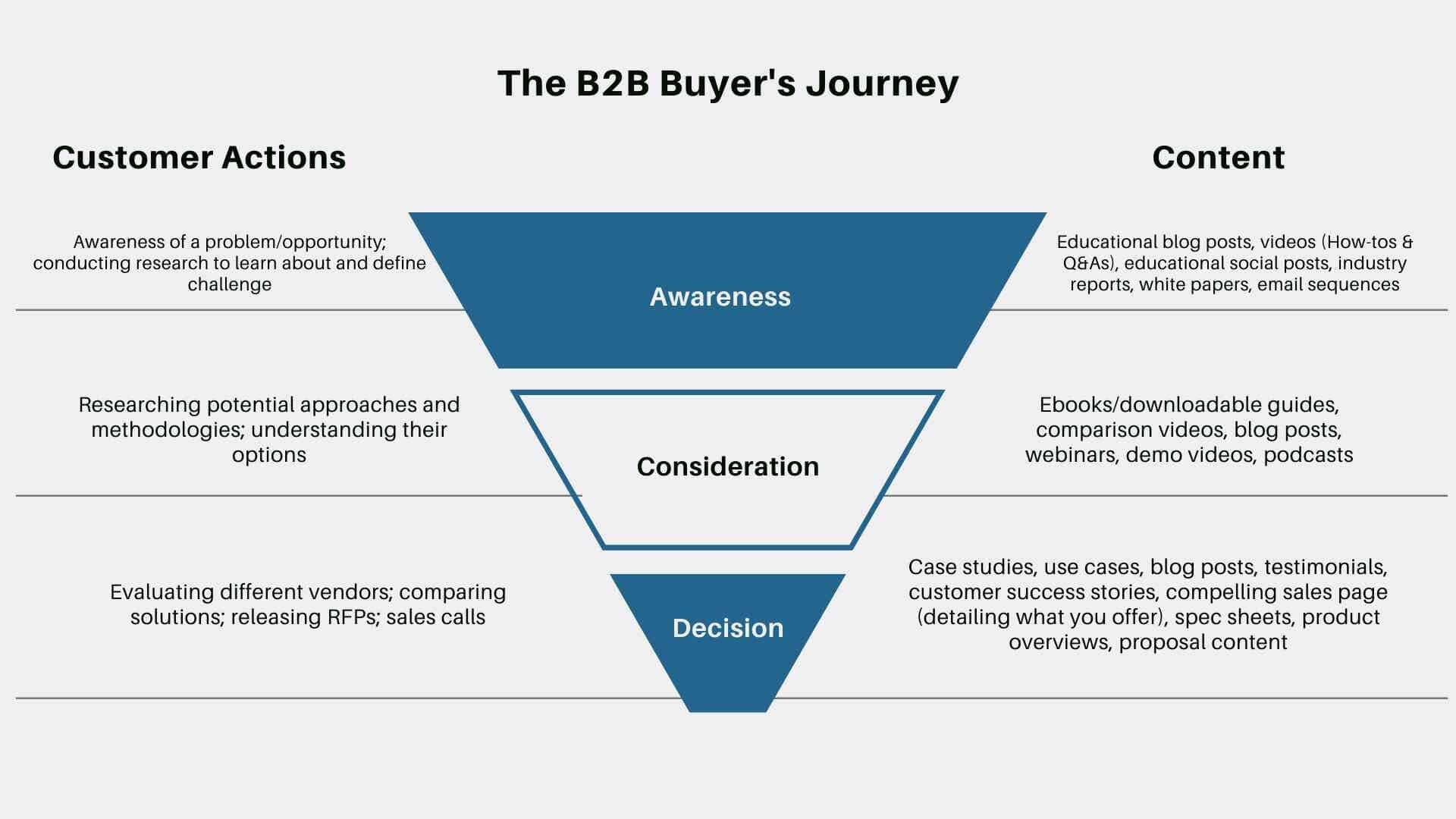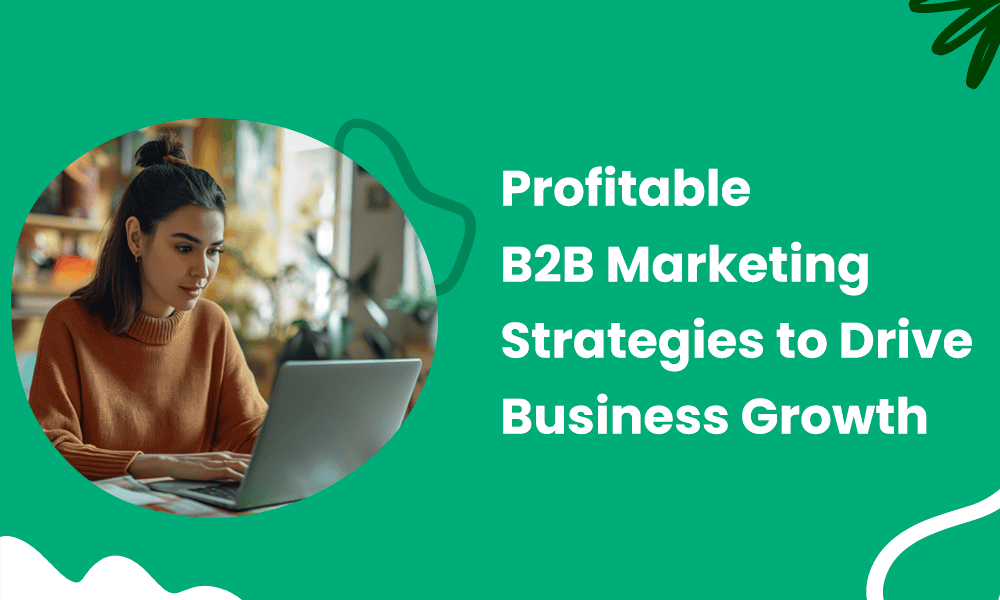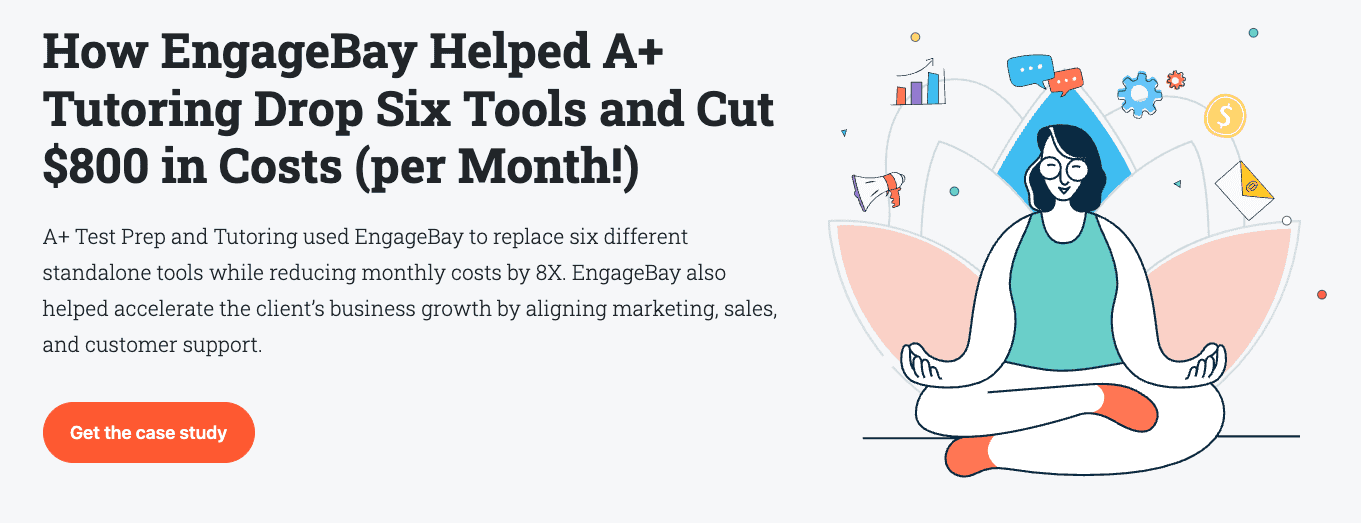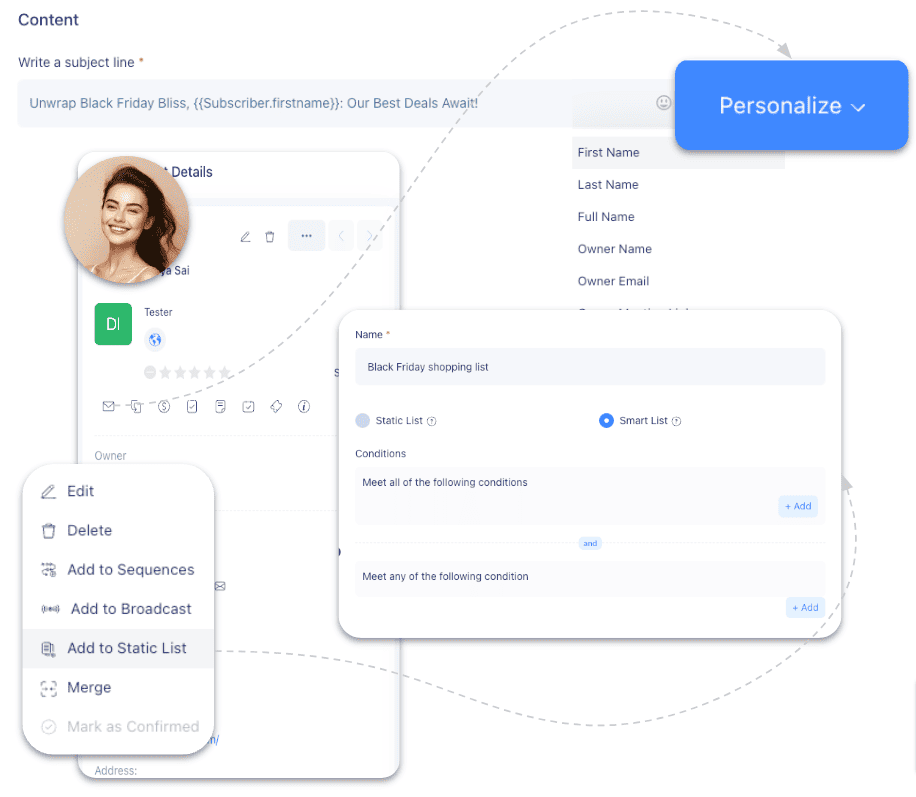B2B marketing is a tough nut to crack. Unlike B2C marketing, where emotions and impulse often drive purchasing decisions, B2B sales involve multiple stakeholders, longer decision-making cycles, and tight budget approvals.
Every lead needs to be nurtured, every pitch needs to prove ROI, and every strategy must align with the specific needs of businesses rather than individual consumers.
Over the years, B2B marketing has evolved beyond cold calls and generic email blasts. Traditional outbound tactics have given way to data-driven strategies, multi-channel outreach, and highly personalized marketing efforts.
With so many moving parts, it’s easy to feel overwhelmed. But once you crack the code, B2B marketing can be incredibly rewarding, opening doors to long-term client relationships and consistent revenue growth.
This article will break down the most effective B2B marketing strategies that can help you generate quality leads, accelerate your sales pipeline, and drive sustainable business growth.
Table of Contents
What is B2B Marketing?
B2B (Business-to-Business) marketing refers to the strategies and tactics companies use to sell products or services to other businesses instead of individual consumers.
It focuses on building long-term relationships by addressing business pain points, demonstrating ROI-driven value, and guiding prospects through the decision-making process to convert them into customers.
EngageBay’s marketing effort is a classic example of B2B marketing, as it offers its platform to businesses and professionals looking for an all-in-one marketing, sales, and customer support solution.
How Does B2B Marketing Differ from B2C Marketing?
B2B (Business-to-Business) and B2C (Business-to-Consumer) marketing have distinct approaches due to differences in their target audiences, decision-making processes, and sales cycles.
B2B vs B2C marketing at a glance
| Aspect | B2B Marketing | B2C Marketing |
| Target audience | Businesses, professionals, decision-makers | Individual consumers |
| Decision-making | Involves multiple stakeholders and a longer approval process | Often made by a single person and based on personal preferences |
| Sales cycle | Longer, requiring lead nurturing and multiple touchpoints | Shorter, with quick purchasing decisions |
| Marketing focus | Logic, ROI, efficiency, and long-term value | Emotions, brand appeal, and instant gratification |
| Communication style | Informative, data-driven, and professional | Engaging, persuasive, and more casual |
| Common strategies | Content marketing, ABM, lead generation, webinars, case studies | Social media ads, influencer marketing, discounts, emotional storytelling |
Stages of the B2B Buyer’s Journey
The B2B buyer’s journey is more intricate than the typical B2C sales funnel. It consists of three key stages:

1. Awareness stage
At this stage, potential buyers recognize a problem or need within their organization. They research possible solutions through online searches, industry reports, and thought leadership content.
To establish your brand’s presence, B2B marketing activities should focus on increasing visibility and credibility.
This can include attending networking events, speaking at industry conferences, and publishing insightful blog posts both on your website and on platforms where your target audience actively engages.
The goal is to position your company as a trusted resource so that when prospects are ready to explore solutions, they already recognize your expertise.
2. Consideration stage
At this point, buyers have identified potential solutions and are evaluating different providers. It’s crucial to understand that not all buyers are ready to make an immediate purchase; your role is to nurture them rather than push a hard sell.
Engagement-driven marketing strategies work best here. For example, you can:
- Host webinars to educate potential leads and provide valuable industry insights.
- Offer product demos to those showing interest.
- Create comparison guides that highlight the strengths of your solution.
- Run targeted email marketing campaigns that showcase your expertise and provide actionable insights.
By offering valuable content, you keep prospects engaged while gradually guiding them toward your solution.
3. Decision stage
At this stage, buyers are ready to make a final purchase decision, but not necessarily from you. They need validation and reassurance that your product or service is the best fit.
To win their trust and push them toward conversion, provide:
- A compelling sales pitch tailored to their specific needs.
- Case studies demonstrating ROI and real-world applications.
- Solution brochures or detailed product information addressing their pain points.
- Transparent pricing and, if necessary, personalized negotiations.
By delivering the right information at the right time, you strengthen their confidence in your offering, making it easier for them to choose your solution over competitors.
The Role of Multiple Stakeholders in B2B Purchases
One of the biggest challenges in B2B marketing is that a single person rarely makes purchasing decisions. Instead, they involve a buying committee with multiple stakeholders, each with different priorities and concerns.
A typical B2B purchase may include:
- End users: The employees who will be using the product or service daily. Their feedback on usability and functionality is crucial.
- Managers: Mid-level managers who assess whether the solution aligns with their team’s goals and workflows.
- Finance teams: Decision-makers who evaluate the cost-effectiveness of the purchase and ensure it fits within the budget.
- Executives: Senior leaders or business owners who approve high-value purchases and focus on overall ROI.
- IT and compliance teams: In industries like SaaS or healthcare, IT and legal teams may also play a role in ensuring the product meets security and regulatory standards.
Because so many individuals are involved, B2B marketers must tailor messaging to address the concerns of each stakeholder.
For example, a technical whitepaper might appeal to IT decision-makers, while a cost-benefit analysis could help win over finance teams.
B2B Marketing Strategies to Look at
Let’s now cover various marketing strategies that you can deploy for your B2B business.
1. Content marketing for B2B success
At every stage of the B2B buyer’s journey, businesses need to create specific types of content tailored to their audience’s needs. While the distribution channels — such as email, social media, blogs, and webinars — may vary, content remains the foundation for establishing authority, generating leads, and nurturing prospects.
Most importantly, B2B buyers don’t make impulsive purchases. They conduct extensive research, evaluate multiple options, and seek data-backed solutions before making a decision. Well-crafted content positions your brand as a trusted industry expert, ensuring that when prospects are ready to buy, your business is top of their mind.
Unlike traditional advertising, which focuses on direct promotion, effective B2B content marketing delivers valuable, educational, and solution-oriented content that resonates with decision-makers.
Key elements of a B2B content marketing strategy:
i. Thought leadership & educational content
It includes high-quality blog posts, whitepapers, and eBooks that address industry pain points and trends. You can leverage expert insights and data-driven research to establish credibility. Position executives or subject matter experts as thought leaders by contributing guest articles and speaking at webinars.
ii. SEO-optimized website content
Optimize your blog and website for search engines with relevant keywords and high-value content. The key is to create pillar pages and topic clusters to improve search rankings and enhance user experience.
Answer common industry questions through FAQ sections and detailed guides.
iii. Case studies & success stories
Showcase real-world examples of how your solution has helped clients overcome challenges. Use data and testimonials to demonstrate ROI and measurable impact.
Here’s an example of a successful case study:
iv. Webinars & video content
Host live webinars and panel discussions to engage potential clients in real time. You can create explainer videos, product demonstrations, and behind-the-scenes insights to humanize your brand.
Furthermore, the webinar content can be repurposed into blog posts, infographics, and email campaigns for wider reach.
v. Lead magnets & gated content
This includes valuable resources such as industry reports, toolkits, or templates in exchange for contact information. You can use landing pages to capture leads and nurture them through email sequences.
2. Account-based marketing (ABM) strategies
ABM is a highly targeted approach that focuses on engaging high-value accounts rather than casting a wide net. Instead of marketing to a broad audience, ABM aligns sales and marketing efforts to personalize outreach for specific companies, leading to higher conversion rates and stronger customer relationships.
ABM is particularly effective in B2B marketing because:
- B2B sales often involve multiple stakeholders, long sales cycles, and high-value deals — making a personalized approach essential.
- ABM helps businesses build relationships with decision-makers by offering tailored content, solutions, and interactions.
- It improves marketing efficiency by focusing resources on accounts that have the highest potential for revenue growth.
- It ensures that marketing and sales teams are aligned, creating a seamless customer journey.
Personalizing outreach for high-value accounts
Successful ABM campaigns rely on hyper-personalized outreach to key stakeholders within target accounts. Here’s how businesses can achieve this:
- Deep account research: Analyze the company’s needs, pain points, industry challenges, and decision-making structure to craft relevant messaging.
- Tailored content and messaging: Create personalized email sequences, case studies, and solution pages that address each account’s specific problems.
- Multi-touchpoint engagement: Use a combination of email, LinkedIn outreach, direct mail, and webinars to engage decision-makers across multiple channels.
- One-on-one interactions: Offer exclusive product demos, VIP events, and strategy calls to build trust and establish authority.
Tools and platforms for running successful ABM campaigns
ABM requires the right tools to execute personalized campaigns at scale. Here are some essential platforms for managing ABM efforts:
- Customer relationship management (CRM): Platforms like EngageBay and HubSpot help track account interactions, lead nurturing, and engagement history.
- Marketing automation: Marketo, EngageBay, and HubSpot enable automated personalized outreach and targeted email campaigns.
- Account intelligence and data: Tools like Clearbit, ZoomInfo, and LinkedIn Sales Navigator provide deep insights into target accounts.
- Ad targeting and retargeting: Platforms like Demandbase and Terminus help serve personalized ads to key stakeholders.
- Sales enablement: Gong and Outreach assist sales teams in tracking conversations and optimizing their engagement strategies.
3. Leveraging LinkedIn for B2B marketing
80% of B2B leads from social media come from LinkedIn, making it a prime channel for reaching executives and business buyers.
LinkedIn provides direct access to decision-makers, industry professionals, and potential clients. With over 900 million users, it offers businesses a powerful way to build relationships, generate leads, and establish thought leadership.
However, your LinkedIn presence starts with a well-optimized company page and professional profiles for key team members. Here’s how to enhance it:
- Use a high-quality logo, banner, and an engaging company description with relevant keywords.
- Clearly outline your products, services, and unique value proposition.
- Ensure leadership and sales team members have complete and professional LinkedIn profiles.
- Craft compelling headlines and summaries that highlight expertise and company value.
- Encourage employees to share company updates and engage with industry content.
You can also boost your reach with sponsored content and in-mail ads to engage high-intent prospects. Pair that with social selling tactics like personalized connection requests and regular industry insights to nurture relationships and build credibility before the pitch.
4. Email marketing & lead nurturing
B2B buyers are typically busy professionals who prefer to consume information on their own terms. Email gives you a direct line to their inbox — where you can share relevant content, address specific pain points, and guide them toward conversion over time.
Email marketing becomes essential for lead nurturing since B2B purchases are rarely made in a single interaction. It helps you stay connected with potential customers by delivering content tailored to their stage in the buyer’s journey — from awareness to decision.
To make your email campaigns more effective and scalable, use automation tools like EngageBay, which allow you to segment and personalize emails based on user behavior — such as browsing history, previous purchases, or form submissions.
With EngageBay, you can easily automate a wide range of email sequences, including welcome emails, post-purchase follow-ups, upselling messages, cart abandonment reminders, and more. Emails are triggered automatically based on the recipient’s actions, ensuring timely and relevant communication.
But sending emails isn’t enough. Tracking performance is key to improving results. Monitor metrics like open rates, click-through rates, bounce rates, and conversions to understand what’s working and what needs refinement. These insights allow you to tweak subject lines, CTAs, and content for better engagement and ROI.
Check out 1,000+ free email templates by EngageBay.
5. Paid advertising & retargeting for B2B leads
Paid advertising can significantly accelerate lead generation in B2B marketing, especially when paired with strategic targeting and retargeting tactics. Unlike B2C, where ads often appeal to impulse, B2B paid campaigns must speak to logic, long-term value, and business outcomes.
Let’s explore how to get the most out of paid channels like Google, LinkedIn, and Facebook.
Best practices for Google Ads in B2B marketing
When B2B buyers begin their research, Google is often their first stop. They’re actively searching for solutions, making Google Ads an ideal channel to capture high-intent leads.
To run effective campaigns:
- Target long-tail keywords that reflect buying intent, like “Best ERP software for mid-sized manufacturing companies.”
- Use ad extensions to highlight features, case studies, or direct demo links.
- Drive traffic to optimized landing pages with clear CTAs (e.g., “Get a Quote,” “Book a Demo”).
- Implement conversion tracking to measure form fills, downloads, and booked calls.
- Use negative keywords to filter out irrelevant traffic and avoid wasting ad spend.
LinkedIn vs Facebook Ads: Which works best for B2B?
After capturing search intent on Google, many B2B marketers turn to social media for targeting and brand reinforcement. LinkedIn and Facebook both have their place, but they serve different roles.
Here’s a quick comparison:
| Platform | Strengths | Best Use Case |
| LinkedIn Ads | Professional targeting by job title, industry, and company size | Lead gen for high-ticket B2B services and enterprise sales |
| Facebook Ads | Cost-effective reach, lookalike audiences, retargeting capabilities | Brand awareness and remarketing in longer sales cycles |
Retargeting strategies to convert warm leads
Because B2B sales cycles are long and non-linear, not every visitor converts right away. That’s where retargeting becomes essential. It helps you stay visible and re-engage warm leads as they move through the buyer’s journey.
Here’s how to do it effectively:
- Segment your retargeting audience based on their behavior, such as visiting the pricing page, downloading an eBook, watching a product video.
- Serve personalized ads aligned with their stage — invite them to a demo, show a case study, or highlight key differentiators.
- Use dynamic retargeting to display specific products or services they’ve shown interest in.
- Retarget across multiple platforms (LinkedIn, Google Display, Facebook) to reinforce brand presence.
- Cap your ad frequency to avoid ad fatigue and maintain a professional impression.
When used together, paid advertising and retargeting form a powerful engine for B2B lead generation. It helps bring in qualified prospects and guides them steadily toward conversion.
6. Partnerships and influencer marketing in B2B
While influencer marketing is typically associated with B2C brands, it has quietly become a powerful growth lever for B2B businesses as well.
Combined with strategic partnerships, it allows companies to tap into established networks, build credibility, and expand their reach in highly targeted markets.
Partnering with industry influencers and thought leaders allows your business to tap into established communities that already trust these voices. Unlike traditional advertising, influencer marketing in B2B isn’t about flashy promotions — it’s about collaborating with experts who share insightful, value-driven content that resonates with your audience.
You can host joint webinars or create co-branded content with them. These collaborations provide valuable educational experiences for your target audience while giving both brands exposure to new prospects.
For example, a CRM platform might team up with a sales consultancy to offer a webinar on improving sales pipeline efficiency — benefiting both parties while delivering actionable insights to attendees.
You will also find B2B businesses building strategic partnerships that allow them to offer greater value to customers and access new market segments.
The key is to find partners whose offerings complement yours and whose customer base aligns with your ideal buyer. It can help unlock long-term growth.
Emerging B2B Marketing Trends for 2025
Now that you know what goes into effective B2B marketing strategies, let’s also look at some of the emerging trends.
AI and automation in B2B lead generation
AI has been a part of B2B marketing for quite some time now. From automating repetitive tasks to enhancing decision-making, it empowers marketers to operate more efficiently and with greater precision.
AI-powered tools aren’t going anywhere — in fact, they’re evolving rapidly to offer even deeper integration and smarter insights.
For instance, the rise of virtual assistants or AI agents has made it possible to engage leads in real-time, answer queries instantly, and even qualify prospects without human intervention.
This level of automation helps businesses save time, reduce manual workload, and increase conversion rates by reaching the right prospect at the right moment with the right message.
Chatbots and conversational marketing
Today’s B2B buyers expect real-time engagement, and that’s where chatbots and conversational marketing come in.
Chatbots can qualify leads, answer product questions, and book demos — all without human intervention.
They help streamline the early stages of the buyer’s journey and provide immediate responses that improve user experience.
Conversational marketing also includes tools like live chat and WhatsApp for Business, enabling sales teams to start meaningful conversations while prospects are actively exploring solutions.
These tools make interactions feel more human, timely, and responsive, which is crucial in long sales cycles where trust and engagement matter.
Data-driven personalization and predictive analytics
Generic marketing is out; hyper-personalized experiences are in.
With access to vast amounts of data, B2B marketers can now tailor messaging and campaigns based on each prospect’s behavior, company profile, industry trends, and intent signals.
This creates highly relevant and timely communication that resonates with the buyer.
Predictive analytics takes it a step further by forecasting which accounts are most likely to convert, allowing marketers to prioritize efforts and allocate resources more effectively.
Platforms like 6sense and Demandbase use intent data and AI to surface in-market accounts and recommend optimal engagement strategies.
Conclusion and Next Steps
B2B marketing may be complex, involving longer sales cycles, multiple stakeholders, and higher-value deals, but with the right strategies, it can deliver measurable, long-term growth.
In this article, we explored some of the most impactful techniques: understanding the B2B buyer’s journey, leveraging content marketing, running account-based campaigns, and using platforms like LinkedIn for targeted outreach.
If there’s one takeaway, it’s this: Success in B2B marketing isn’t about chasing every trend; it’s about being intentional. Start small by implementing account-based marketing tactics or adopting social selling practices, and scale up as you gain traction.
To help you take the first step, download our free B2B marketing checklist — a practical, action-oriented guide to audit your current efforts and plan your next moves with confidence.


